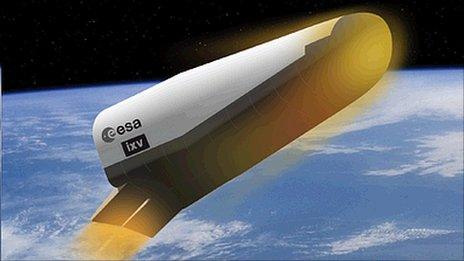Europe's IXV mini 'spaceplane' set to fly
- Published
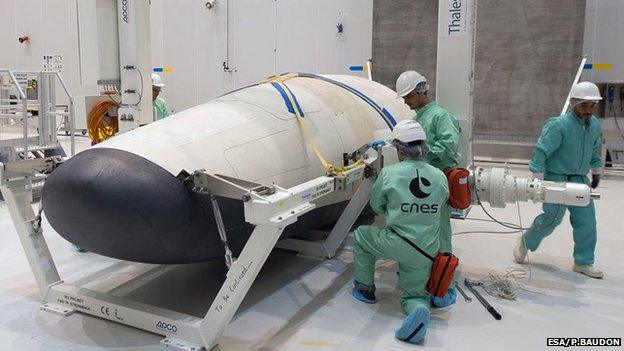
The IXV is an Italian-led project within Esa. The vehicle is 5m long and and weighs almost two tonnes
Europe is all set to launch its mini "spaceplane" demonstrator.
The unmanned Intermediate eXperimental Vehicle (IXV) will launch atop a Vega rocket from South America, fly east around the globe, before splashing down in the Pacific Ocean.
The wedge-shaped craft is designed to gather information on how space objects fall back to Earth.
Engineers could use the data to inform a range of future technologies from re-usable rockets to Mars landers.
Lift-off for the Vega from French Guiana is timed for 10:00 local time (13:00 GMT) on Wednesday.
It will throw the IXV to an altitude of 450km, from where the European Space Agency (Esa) test article will then begin its rapid descent.
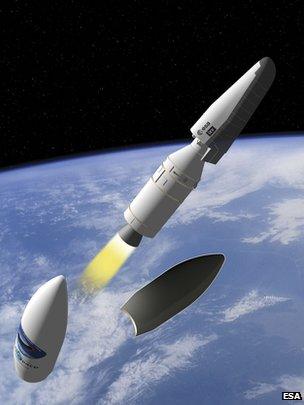
The Vega rocket will throw the IXV to an altitude of 450km, ready for its descent
By the time it re-enters the atmosphere, the craft should be moving at 7.5km/s. As it pushes up against the air, the temperatures on its leading surfaces will soar to 1,700C.
Flaps and thrusters will be used to control the trajectory, ensuring the IXV comes down close to a recovery ship some 3,000km west of the Galapagos Islands.
A parachute system deployed in the very late stages of the flight will put the two-tonne vehicle gently in the water. Floatation balloons will come out to stop it from sinking.
Beginning to end, the complete mission is expected to last approximately one hour and 40 minutes.
Europe's expertise on re-entry technologies is more limited than, say, the US's or Russia's - something it wants to change with the help of the IXV.
Esa's project manager Giorgio Tumino told BBC News: "Europe is excellent at going to orbit; we have all the launchers, for example. We also have great knowhow in operating complex systems in orbit. But where we are a bit behind is in the knowledge of how to come back from orbit. So, if we are to close the circle - go to orbit, stay in orbit, come back from orbit - this third leg we need to master as well as other spacefaring nations."
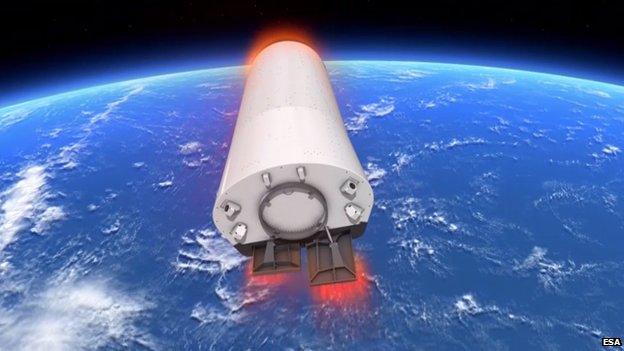
The IXV will use flaps and thrusters to control its automated descent through the atmosphere
Europe has produced one or two re-entry capsule systems in the past, but the IXV's complex "lifting body" is new territory.
The vehicle is packed with sensors. Their data will feed back into materials research and into the computer models used to describe the energetic physics that occurs when an object plunges through atmospheric gases at hypersonic speeds.
The IXV will start its data dump the moment it clears the descent's radio blackout phase, which occurs when the vehicle is enveloped by the hot plasma created during high-speed re-entry.
Getting all the information off the craft while it is still in the air means the mission can complete its objectives even if something goes wrong at splashdown and the IXV sinks.
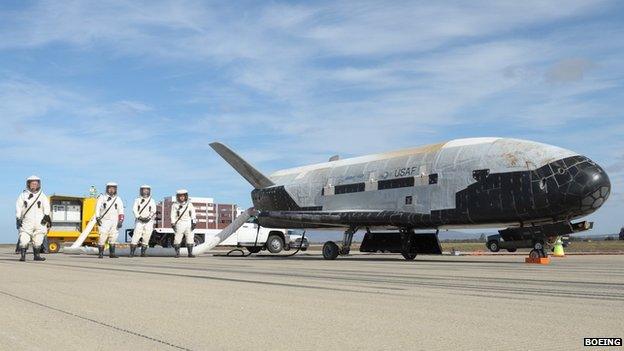
The X-37B is used by the US military. Europe's version would be exclusively civilian in operation
Esa has already approved a follow-on project called Pride (Programme for Reusable In-orbit Demonstrator in Europe).
This would see the development of another re-entry vehicle but with a key difference - the ability to land on a runway.
In this respect, the Pride craft would look very similar to the X-37B mini shuttle, which is operated by the American military.
No-one is quite sure what missions are flown by this unmanned craft, but they are likely to include the early testing of new technologies for future satellites.
This could be a role also for Europe's Pride vehicle. In-orbit servicing of satellites is a capability often discussed in this context as well.
Esa nations will meet shortly to define these roles.
"We need still to agree with all the member states all the different types of operations in orbit. But whatever the payload, it will always be in the perimeter space of civilian applications," stresses Mr Tumino.
The UK is not involved in the Italian-led IXV programme, but it is signed up to Pride, albeit at a low contribution.
Britain's interests relate to reusable launcher technologies and to the safe return of planetary samples, such as rock specimens collected on Mars.
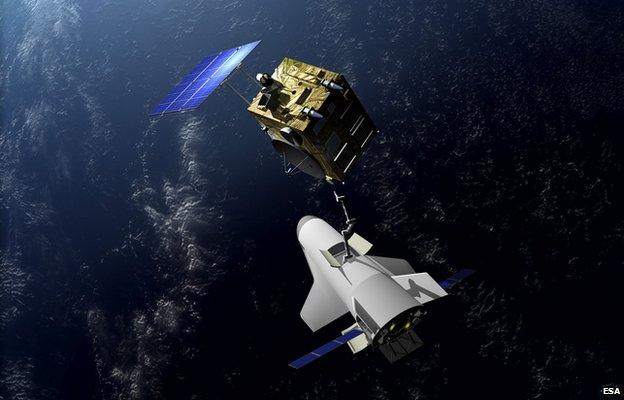
The Pride follow-on is expected to fly in space by 2020

Future technologies could find their way into rocket stages that fly back to a runway after use
Jonathan.Amos-INTERNET@bbc.co.uk and follow me on Twitter: @BBCAmos, externalI
- Published17 October 2014
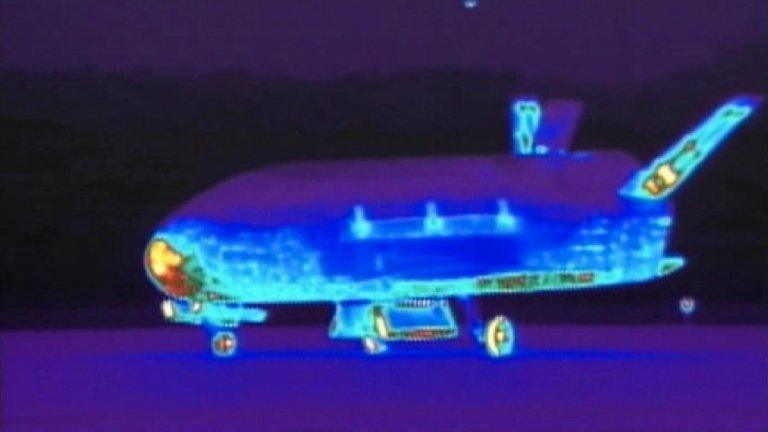
- Published20 June 2013
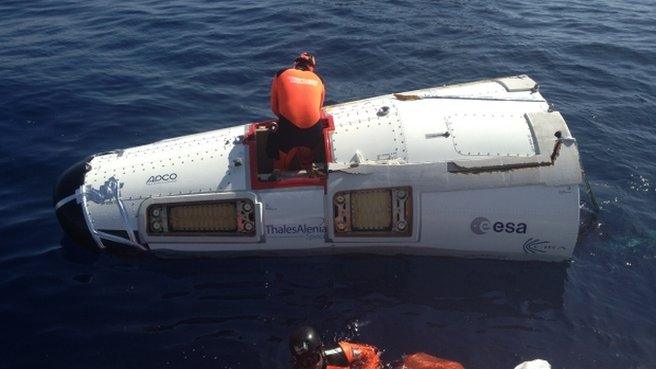
- Published23 June 2011
